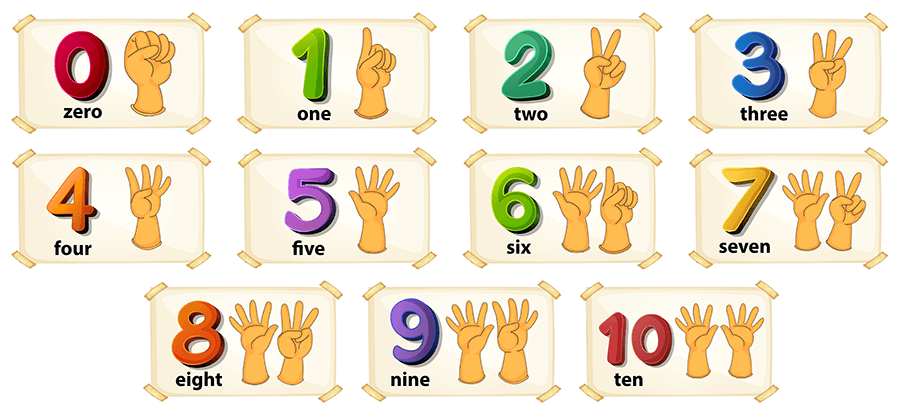Los Números en Inglés: ¡Descubre cómo contar en Inglés – Aprende los números del 1 al 100
Introducción
¡Hola, hoy vamos a sumergirnos en el fascinante mundo de los números en inglés. Saber cómo contar en otro idioma es una habilidad crucial y divertida de aprender. Ya sea que estés planeando viajar, estudiar en el extranjero o simplemente quieras ampliar tus conocimientos lingüísticos, dominar los números en inglés te será de gran ayuda. Así que, sin más preámbulos, ¡comencemos!
Definición
Los números en inglés, conocidos como “Numbers” en el idioma, son la base de las operaciones matemáticas y son esenciales para la comunicación cotidiana. Aprender los números en inglés te permitirá decir la hora, contar objetos, comprender precios y muchas otras situaciones cotidianas.

Los Números en Inglés – Pronunciación y Fonética
A continuación, te presentamos una tabla con los números del 1 al 100. Junto a cada número, encontrarás su pronunciación y su significado.
| Numeros | Pronunciación Fonética | Pronunciación Literal | Significado |
| 1 | wʌn | wuhn | Uno |
| 2 | tuː | too | Dos |
| 3 | θriː | three | Tres |
| 4 | fɔːr | fohr | Cuatro |
| 5 | faɪv | fahyv | Cinco |
| 6 | sɪks | six | Seis |
| 7 | ˈsɛvən | sev-uhn | Siete |
| 8 | eɪt | ayt | Ocho |
| 9 | naɪn | nin | Nueve |
| 10 | tɛn | ten | Diez |
| 11 | ɪˈlɛvən | ilev-uhn | Once |
| 12 | ˈtwɛlv | twelv | Doce |
| 13 | ˈθɜrˈtin | thur-teen | Trece |
| 14 | ˈfɔrtin | fohr-teen | Catorce |
| 15 | ˈfɪfˈtin | fif-teen | Quince |
| 16 | sɪksˈtin | six-teen | Dieciséis |
| 17 | sɛvənˈtin | sev-uhn-teen | Diecisiete |
| 18 | ˈeɪˈtin | ayt-teen | Dieciocho |
| 19 | naɪnˈtin | nine-teen | Diecinueve |
| 20 | ˈtwɛnti | twen-tee | Veinte |
| 21 | ˈtwɛnti-ˈwʌn | twen-tee-wuhn | Veintiuno |
| 22 | ˈtwɛnti-ˈtuː | twen-tee-too | Veintidós |
| 23 | ˈtwɛnti-θriː | twen-tee-three | Veintitrés |
| 24 | ˈtwɛnti-ˈfɔːr | twen-tee-fohr | Veinticuatro |
| 25 | ˈtwɛnti-ˈfaɪv | twen-tee-fahyv | Veinticinco |
| 26 | ˈtwɛnti-sɪks | twen-tee-six | Veintiséis |
| 27 | ˈtwɛnti-ˈsɛvən | twen-tee-sev-uhn | Veintisiete |
| 28 | ˈtwɛnti-ˈeɪt | twen-tee-ayt | Veintiocho |
| 29 | ˈtwɛnti-naɪn | twen-tee-nin | Veintinueve |
| 30 | ˈθɜrˈti | thur-tee | Treinta |
| 31 | ˈθɜrˈti-ˈwʌn | thur-tee-wuhn | Treinta y uno |
| 32 | ˈθɜrˈti-ˈtuː | thur-tee-too | Treinta y dos |
| 33 | ˈθɜrˈti-θriː | thur-tee-three | Treinta y tres |
| 34 | ˈθɜrˈti-ˈfɔːr | thur-tee-fohr | Treinta y cuatro |
| 35 | ˈθɜrˈti-ˈfaɪv | thur-tee-fahyv | Treinta y cinco |
| 36 | ˈθɜrˈti-sɪks | thur-tee-six | Treinta y seis |
| 37 | ˈθɜrˈti-ˈsɛvən | thur-tee-sev-uhn | Treinta y siete |
| 38 | ˈθɜrˈti-ˈeɪt | thur-tee-ayt | Treinta y ocho |
| 39 | ˈθɜrˈti-naɪn | thur-tee-nin | Treinta y nueve |
| 40 | ˈfɔrˈti | fohr-tee | Cuarenta |
| 41 | ˈfɔrˈti-ˈwʌn | fohr-tee-wuhn | Cuarenta y uno |
| 42 | ˈfɔrˈti-ˈtuː | fohr-tee-too | Cuarenta y dos |
| 43 | ˈfɔrˈti-θriː | fohr-tee-three | Cuarenta y tres |
| 44 | ˈfɔrˈti-ˈfɔːr | fohr-tee-fohr | Cuarenta y cuatro |
| 45 | ˈfɔrˈti-ˈfaɪv | fohr-tee-fahyv | Cuarenta y cinco |
| 46 | ˈfɔrˈti-sɪks | fohr-tee-six | Cuarenta y seis |
| 47 | ˈfɔrˈti-ˈsɛvən | fohr-tee-sev-uhn | Cuarenta y siete |
| 48 | ˈfɔrˈti-ˈeɪt | fohr-tee-ayt | Cuarenta y ocho |
| 49 | ˈfɔrˈti-naɪn | fohr-tee-nin | Cuarenta y nueve |
| 50 | ˈfɪfˈti | fiv-tee | Cincuenta |
| 51 | ˈfɪfˈti-ˈwʌn | fiv-tee-wuhn | Cincuenta y uno |
| 52 | ˈfɪfˈti-ˈtuː | fiv-tee-too | Cincuenta y dos |
| 53 | ˈfɪfˈti-θriː | fiv-tee-three | Cincuenta y tres |
| 54 | ˈfɪfˈti-ˈfɔːr | fiv-tee-fohr | Cincuenta y cuatro |
| 55 | ˈfɪfˈti-ˈfaɪv | fiv-tee-fahyv | Cincuenta y cinco |
| 56 | ˈfɪfˈti-sɪks | fiv-tee-six | Cincuenta y seis |
| 57 | ˈfɪfˈti-ˈsɛvən | fiv-tee-sev-uhn | Cincuenta y siete |
| 58 | ˈfɪfˈti-ˈeɪt | fiv-tee-ayt | Cincuenta y ocho |
| 59 | ˈfɪfˈti-naɪn | fiv-tee-nin | Cincuenta y nueve |
| 60 | ˈsɪkˈsti | six-tee | Sesenta |
| 61 | ˈsɪkˈsti-ˈwʌn | six-tee-wuhn | Sesenta y uno |
| 62 | ˈsɪkˈsti-ˈtuː | six-tee-too | Sesenta y dos |
| 63 | ˈsɪkˈsti-θriː | six-tee-three | Sesenta y tres |
| 64 | ˈsɪkˈsti-ˈfɔːr | six-tee-fohr | Sesenta y cuatro |
| 65 | ˈsɪkˈsti-ˈfaɪv | six-tee-fahyv | Sesenta y cinco |
| 66 | ˈsɪkˈsti-sɪks | six-tee-six | Sesenta y seis |
| 67 | ˈsɪkˈsti-ˈsɛvən | six-tee-sev-uhn | Sesenta y siete |
| 68 | ˈsɪkˈsti-ˈeɪt | six-tee-ayt | Sesenta y ocho |
| 69 | ˈsɪkˈsti-naɪn | six-tee-nin | Sesenta y nueve |
| 70 | ˈsɛvənˈti | sev-uhn-tee | Setenta |
| 71 | ˈsɛvənˈti-ˈwʌn | sev-uhn-tee-wuhn | Setenta y uno |
| 72 | ˈsɛvənˈti-ˈtuː | sev-uhn-tee-too | Setenta y dos |
| 73 | ˈsɛvənˈti-θriː | sev-uhn-tee-three | Setenta y tres |
| 74 | ˈsɛvənˈti-ˈfɔːr | sev-uhn-tee-fohr | Setenta y cuatro |
| 75 | ˈsɛvənˈti-ˈfaɪv | sev-uhn-tee-fahyv | Setenta y cinco |
| 76 | ˈsɛvənˈti-sɪks | sev-uhn-tee-six | Setenta y seis |
| 77 | ˈsɛvənˈti-ˈsɛvən | sev-uhn-tee-sev-uhn | Setenta y siete |
| 78 | ˈsɛvənˈti-ˈeɪt | sev-uhn-tee-ayt | Setenta y ocho |
| 79 | ˈsɛvənˈti-naɪn | sev-uhn-tee-nin | Setenta y nueve |
| 80 | ˈeɪˈti | ayt-tee | Ochenta |
| 81 | ˈeɪˈti-ˈwʌn | ayt-tee-wuhn | Ochenta y uno |
| 82 | ˈeɪˈti-ˈtuː | ayt-tee-too | Ochenta y dos |
| 83 | ˈeɪˈti-θriː | ayt-tee-three | Ochenta y tres |
| 84 | ˈeɪˈti-ˈfɔːr | ayt-tee-fohr | Ochenta y cuatro |
| 85 | ˈeɪˈti-ˈfaɪv | ayt-tee-fahyv | Ochenta y cinco |
| 86 | ˈeɪˈti-sɪks | ayt-tee-six | Ochenta y seis |
| 87 | ˈeɪˈti-ˈsɛvən | ayt-tee-sev-uhn | Ochenta y siete |
| 88 | ˈeɪˈti-ˈeɪt | ayt-tee-ayt | Ochenta y ocho |
| 89 | ˈeɪˈti-naɪn | ayt-tee-nin | Ochenta y nueve |
| 90 | ˈnaɪnˈti | nin-tee | Noventa |
| 91 | ˈnaɪnˈti-ˈwʌn | nin-tee-wuhn | Noventa y uno |
| 92 | ˈnaɪnˈti-ˈtuː | nin-tee-too | Noventa y dos |
| 93 | ˈnaɪnˈti-θriː | nin-tee-three | Noventa y tres |
| 94 | ˈnaɪnˈti-ˈfɔːr | nin-tee-fohr | Noventa y cuatro |
| 95 | ˈnaɪnˈti-ˈfaɪv | nin-tee-fahyv | Noventa y cinco |
| 96 | ˈnaɪnˈti-sɪks | nin-tee-six | Noventa y seis |
| 97 | ˈnaɪnˈti-ˈsɛvən | nin-tee-sev-uhn | Noventa y siete |
| 98 | ˈnaɪnˈti-ˈeɪt | nin-tee-ayt | Noventa y ocho |
| 99 | ˈnaɪnˈti-naɪn | nin-tee-nin | Noventa y nueve |
| 100 | wʌn ˈhʌndrəd | sev-uhn-tee-nin | Cien |
Guía de Pronunciación
Ahora, veamos cómo pronunciar estos números en inglés de manera que sea fácilmente comprensible para hablantes de español. Recuerda que las letras en inglés a menudo tienen sonidos diferentes a los del español, así que presta atención a las siguientes pautas:
- La letra “w” se pronuncia como “wuh.”
- La letra “th” se pronuncia como “z” en “zap” para “θ” y como “z” en “azure” para “ð.”
- La letra “r” se pronuncia suavemente y no se enrolla como en español.
- La letra “i” se pronuncia como en “si” y “e” como en “me.”
- Ahora, ¡vamos a practicar algunos ejemplos juntos!
- 21: “ˈtwɛnti-wʌn” (Veinte y uno)
- 46: “fɔːrˈti-sɪks” (Cuarenta y seis)
- 150: “wʌn ˈfɪfti” (Ciento cincuenta)
- 365: “θriː ˈsɪksti-faɪv” (Trescientos sesenta y cinco
Conclusión
Felicidades, has dado un gran paso en tu camino para aprender los números en inglés. Estas habilidades te serán útiles en muchas situaciones, tanto en tu vida diaria como en tus aventuras por el mundo. Recuerda que la práctica constante es clave para perfeccionar tu pronunciación y comprensión. ¡Sigue adelante y diviértete explorando el idioma inglés! Siéntete libre de volver a este blog cada vez que necesites repasar. ¡Hasta la próxima lección!
Picture Attribute: Image by brgfx, Image by brgfx



